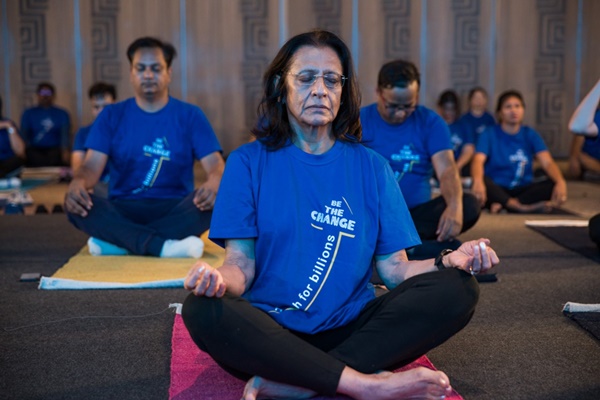K V Venkatasubramanian,
Yoga postures and breathing exercises could help patients with irregular and often rapid heart rate (atrial fibrillation) manage their symptoms, new research shows.
Atrial fibrillation (AF) is the most common heart rhythm disorder. Symptoms of atrial fibrillation include palpitations, racing or irregular pulse, shortness of breath, tiredness, chest pain and dizziness. AF is a type of arrhythmia (a condition in which the heart beats with an irregular or abnormal rhythm) that can lead to blood clots, stroke, heart failure and other heart-related complications.
A team of researchers led Dr. Naresh Sen of Hridaya Ganesha SMS Hospital, Jaipur, found that over 16 weeks of yoga sessions, AF patients saw their symptom episodes drop by about half. Their mental well-being also got a boost.
“The symptoms of atrial fibrillation can be distressing. They come and go, causing many patients to feel anxious and limiting their ability to live a normal life,” he says.
“Our study suggests that yoga has wide-ranging physical and mental health benefits for patients with atrial fibrillation and could be added on top of usual therapies,” Sen says in a research paper at the European Study of Cardiology (ESC) Congress recently.
The team investigated whether yoga could ease symptoms in patients with atrial fibrillation. The study enrolled 538 patients from 2012 to 2017. Patients served as their own controls. For 12 weeks they did no yoga, then for 16 weeks patients attended 30-minute yoga sessions every other day which included postures and breathing. During the yoga period, patients were also encouraged to practice the movements and breathing at home on a daily basis.
During both study periods, symptoms and episodes of atrial fibrillation were recorded. Some patients also wore a heart monitor to verify atrial fibrillation episodes. Patients completed an anxiety and depression survey and a questionnaire assessing their ability to do daily activities and socialise, energy levels and mood. Heart rate and blood pressure were also measured. The researchers then compared the outcomes between the yoga and non-yoga periods.
During the 16-week yoga period, patients experienced significant improvements in all areas compared to the 12-week non-yoga period. For example, during the non-yoga period, patients experienced an average of 15 symptomatic episodes of atrial fibrillation compared to eight episodes during the yoga period. After yoga training, the average blood pressure was 11/6 mmHg lower.
Welcome!Log into your account

















